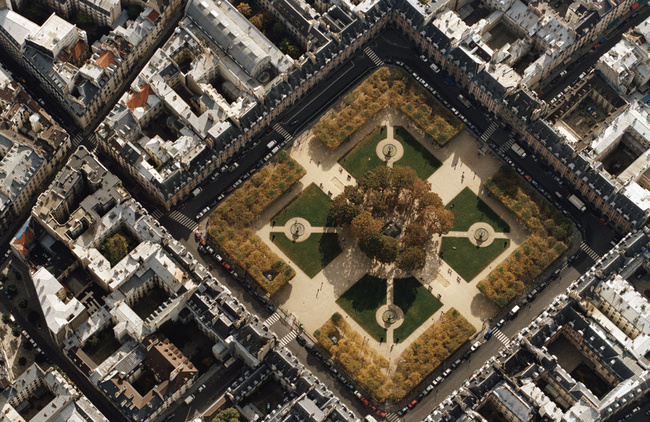The Place des Vosges -- The Creation of Public Space
Joan DeJean, How Paris Became Paris: The Invention of the Modern City (New York: Bloomsbury,2014), pp.45-46
IN THE 1550s , Philip II of Spain wanted to commemorate his reign with grandiose monuments more glorious than anything the world had ever seen. He chose architect Gaspar de Vega as his counselor in architectural and artistic matters. In 1556, the king's special envoy toured Northern Europe and France in search of models that could inspire Spanish architects. His report on his visit to Paris in May of that year was brief and categoric: he had spent but a single day there, in order to tour the Louvre , which he pronounced "an outdated construction." "This is little time for such a big city," Gaspar de Vega admitted, "but I didn't remark a single notable building, and the only interesting thing about the city is its size."
This was the capital Henri IV found in 1598: a city an expert had decreed a virtual architectural wasteland.
As the seventeenth century began, Paris was lacking any notable public space. The French word place (literally "place" or "space") then designated simply any open-air location free of construction. What were then called places were either nondescript public spots such as market places, completely undeveloped and without infrastructure, or merely areas where streets were wider and where there was thus a bit of room for people to congregate.
By the end of the seventeenth century, the word had another definition, one that proves that a new kind of place had come into existence. A place was now described as "open, public space, surrounded by buildings ," intended for pre cise purposes: "to provide a spot for public gatherings," "to ornament the city," and "to facilitate commerce" within it.
To illustrate the word's recently acquired meaning, all contemporary dictionaries gave the same example: the Place Royale, the Royal Square. Their new definition of a place was in fact tailor-made to suit the Place Royale. That exemplary place still exists and is now known as the Place des Vosges, a name that dates from 1800. It was Paris' first notable modern architectural project, its initial planned public space, the original modern city square -- and the second spot that helped Paris become Paris. In the course of the seventeenth century, the Place was redefined on several occasions. Each time this happened, the space revitalized the city; each time, developments that originated there subsequently proved essential to Paris' identity.

Aerial View of the Place des Vosges Today